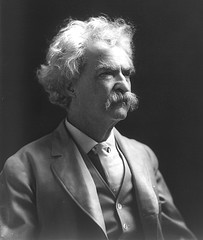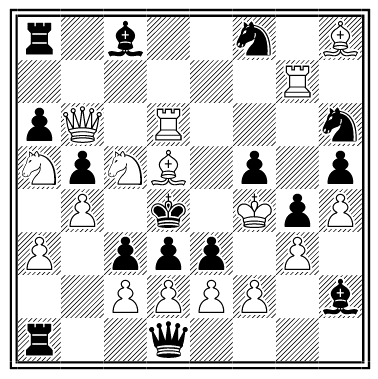“Wit is educated insolence.” — Aristotle
Author: Greg Ross
Scandal
In 1394, a pig was hanged at Mortaign for having sacrilegiously eaten a consecrated wafer; and in a case of infanticide, it is expressly stated in the plaintiff’s declaration that the pig killed the child and ate of its flesh, “although it was Friday,” and this violation of the jejunium sextae, prescribed by the Church, was urged by the prosecuting attorney and accepted by the court as a serious aggravation of the porker’s offence.
— E.P. Evans, The Criminal Prosecution and Capital Punishment of Animals, 1906
Wherever

At the height of Mark Twain’s popularity, a group of his friends in New York wanted to send him a birthday greeting.
But Twain was traveling abroad and none of them knew where to direct the letter.
After some hopeless havering they simply addressed it “Mark Twain, God Knows Where.”
Several weeks later a note arrived from Twain.
It said: “He did.”
Presto
Pick a three-digit number (example: 412).
Double it to create a six-digit number (412412).
Divide the result successively by 7, by 11, and by 13. There will be no remainders.
The result is the original number.
In Memoriam
Epitaph of John Laird McCaffrey (1940-1995), who lies in Montreal’s Mount Royal Cemetery:
John:
Free your body and soul
Unfold your powerful wings
Climb up the highest mountains
Kick your feet up in the air
You may now live forever
Or return to this earth
Unless you feel good where you are!
It was composed jointly by his ex-wife and mistress.
Read the first letter of each line.
Where’s the Fallacy?

Trivium
Twelve percent of people dream only in black and white.
“Subterranean Garden, and Natural Hot-Bed”
A curious account of a subterranean garden formed at the bottom of the Percy Main Pit, Newcastle, by the furnace-keeper, was lately communicated to the Caledonian Horticultural Society. The plants are formed in the bottom of the mine by the light and radiant heat of an open stove, constantly maintained for the sake of ventilation. The same letter communicated an account of an extensive natural hot-bed near Dudley, in Staffordshire, which is heated by means of the slow combustion of coal at some depth below the surface. From this natural hot-bed, a gardener raises annually crops of different kinds of culinary vegetables, which are earlier, by some weeks, than those in the surrounding gardens.
— Curiosities for the Ingenious, 1825
Even Deadlier
Harold Cross once composed a chess position with 29 possible mates.
In this one, by Henry Dudeney, White can choose among 36 different mates on the move:

In a Word
martext
n. a blundering preacher
